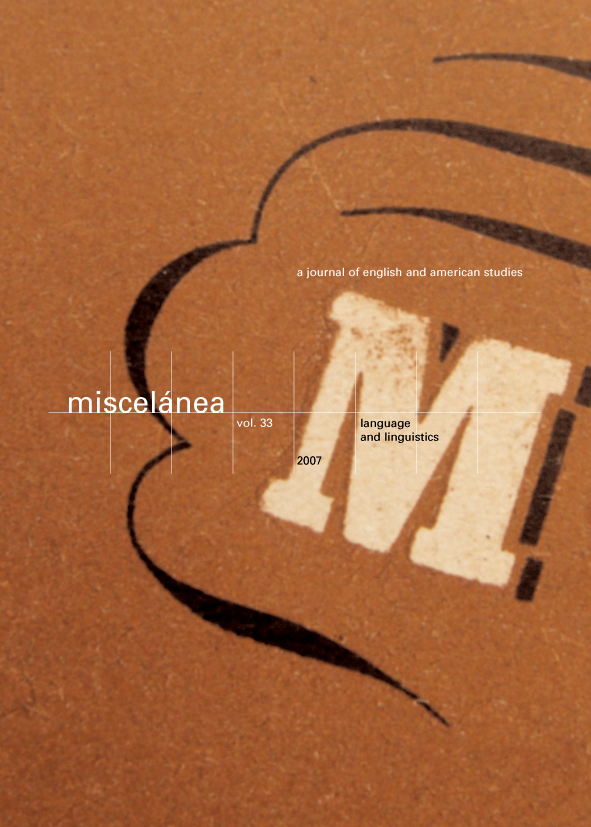Priorities and Hierarchical Accounts of Translation
DOI:
https://doi.org/10.26754/ojs_misc/mj.200610090Palabras clave:
traducción, prioridades, jerarquía, prototipos, subjetividadResumen
Este artículo es un estudio del concepto de prioridad y su utilización combinada con la noción de jerarquía, tal como aparecen en publicaciones teóricas y especializadas sobre la traducción. Las jerarquías y las prioridades pueden ser implícitas o explícitas, prescritas, sugeridas o descritas. El presente estudio comienza con un repaso en orden cronológico de los enfoques jerarquizados de la traducción de Nida y Levyv, y sigue la evolución de su legado en autores tan dispares como Newmark y Gutt. Asimismo, se apunta el concepto de prioridades en modelos didácticos, como el de Nord, y en enfoques descriptivos de la traductología (Toury y Chesterman). El artículo incluye análisis y comentarios de todos ellos. Entre las conclusiones se reclama abordar las prioridades traductológicas de una manera más sistemática y clara. Además, se incluyen algunas herramientas conceptuales que se
derivan de un modelo de prioridades jerarquizadas y restricciones, como por ejemplo la ambición y la riqueza de una traducción. Finalmente, el artículo concluye con una adaptación de la propuesta de Lakoff y Johnson sobre la prototipicalidad y su utilidad potencial en la investigación traductológica y un mejor entendimiento de lo que supone traducir.
Descargas
Referencias
Toury, Gideon. 1997. “What Is It That Renders a Spoonerism (Un)translatable?”, in Delabastita, D. Traductio, Essays on Punning and Translation. Manchester: St Jerome and Presses Universitaires de Namr: 270-290.
Bartsch, Renate. 1987. Norms of Language. London: Longman.
Chesterman, Andrew. 1997. Memes of Translation., Amsterdam: John Benjamins.
Gutt, Ernst. 1991. Translation and Relevance. Oxford: Basil Blackwell.
Hatim, Basil; Ian Mason. 1990. Discourse and the Translator. Harlow, England: Longman.
Hermans, Theo. 1999. Translation in Systems. Manchester: St Jerome.
Hewson, Lance; Jacky Martin. 1991. Redefining Translation. The Variational Approach. London: Routledge.
Holmes, James S. 1988. “The Name and Nature of Translation Studies”, Translated! Papers on Literary Translation and Translation Studies. Amsterdam: Rodopi: 67-79.
Lakoff, George and Mark Johnson. 1980. Metaphors We Live By. Chicago and London: University of Chicago Press.
Lefevere, André. 1992. Translation, Rewriting and the Manipulation of Literary Fame. London: Routledge.
Levyv, Jirí. 1969. Die literarishce Übersetzung: Theorie einer Kunstgattung. Frankfurt: Athenäum.
Newmark, Peter. 1988. A Textbook of Translation. London: Prentice Hall.
Nida, Eugene. 1964. Towards a Science of Translating. Leyden: E.J. Brill.
—; Charles Taber. 1969. The Theory and Practice of Translation, Leiden: E.J. Brill, ed. 1982.
Nord, Christiane. 1997. Translating as a Purposeful Activity. Manchester: St Jerome.
Snell-Hornby, Mary.1988. Translation Studies: An Integrated Approach. Amsterdam: John Benjamins.
Toury, Gideon. 1995. Translation Studies and Beyond. Amsterdam: John Benjamins.
Venuti, Lawrence.1995. The Translator’s Invisibilty. London/New York: Routledge.
Zabalbeascoa, Patrick. 1995. “Levels of Prescriptiveness in Translation”, in Mason, Ian and Christine Pagnoulle (eds.) Cross-Words. Liège: Université de Liège: 23-29.
—. 2001. “La ambición y la subjetividad de una traducción desde un modelo de prioridades y restricciones” en Sánchez Trigo, Elena y Oscar Díaz Fouces (eds.) Traducción y Comunicación V.2. Vigo: Servicio de Publicaciones Universidade de Vigo: 129-150.
Descargas
Publicado
Número
Sección
Licencia
Derechos de autor 2009 Patrick Zabalbeascoa

Esta obra está bajo una licencia internacional Creative Commons Atribución-NoComercial 4.0.


